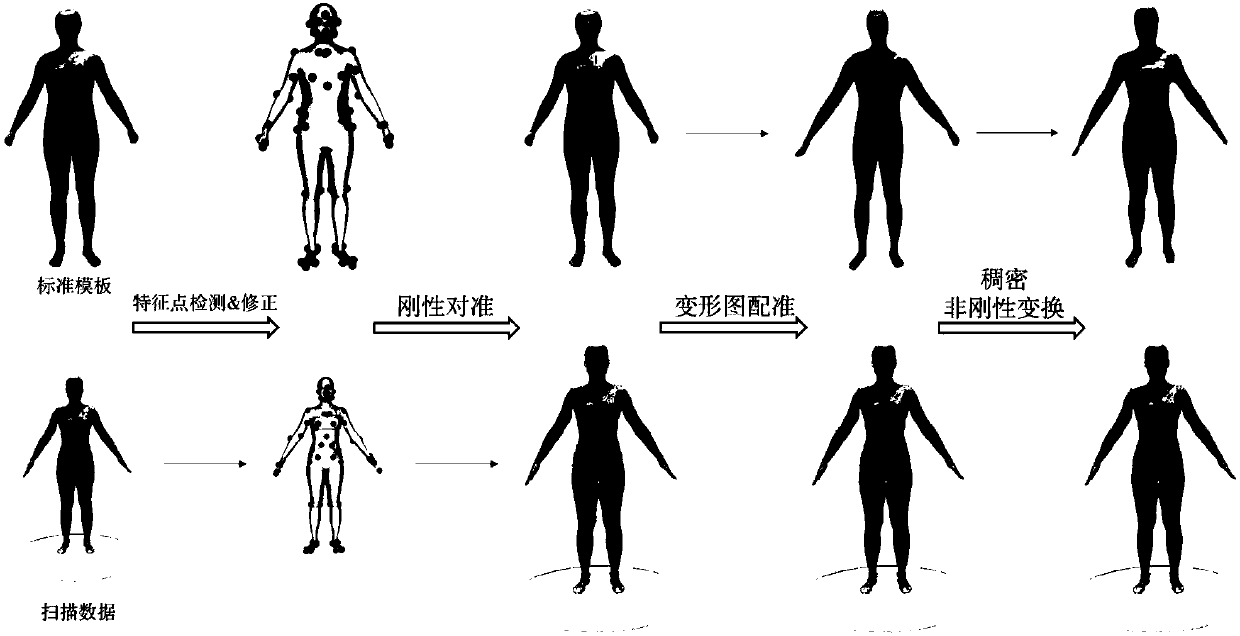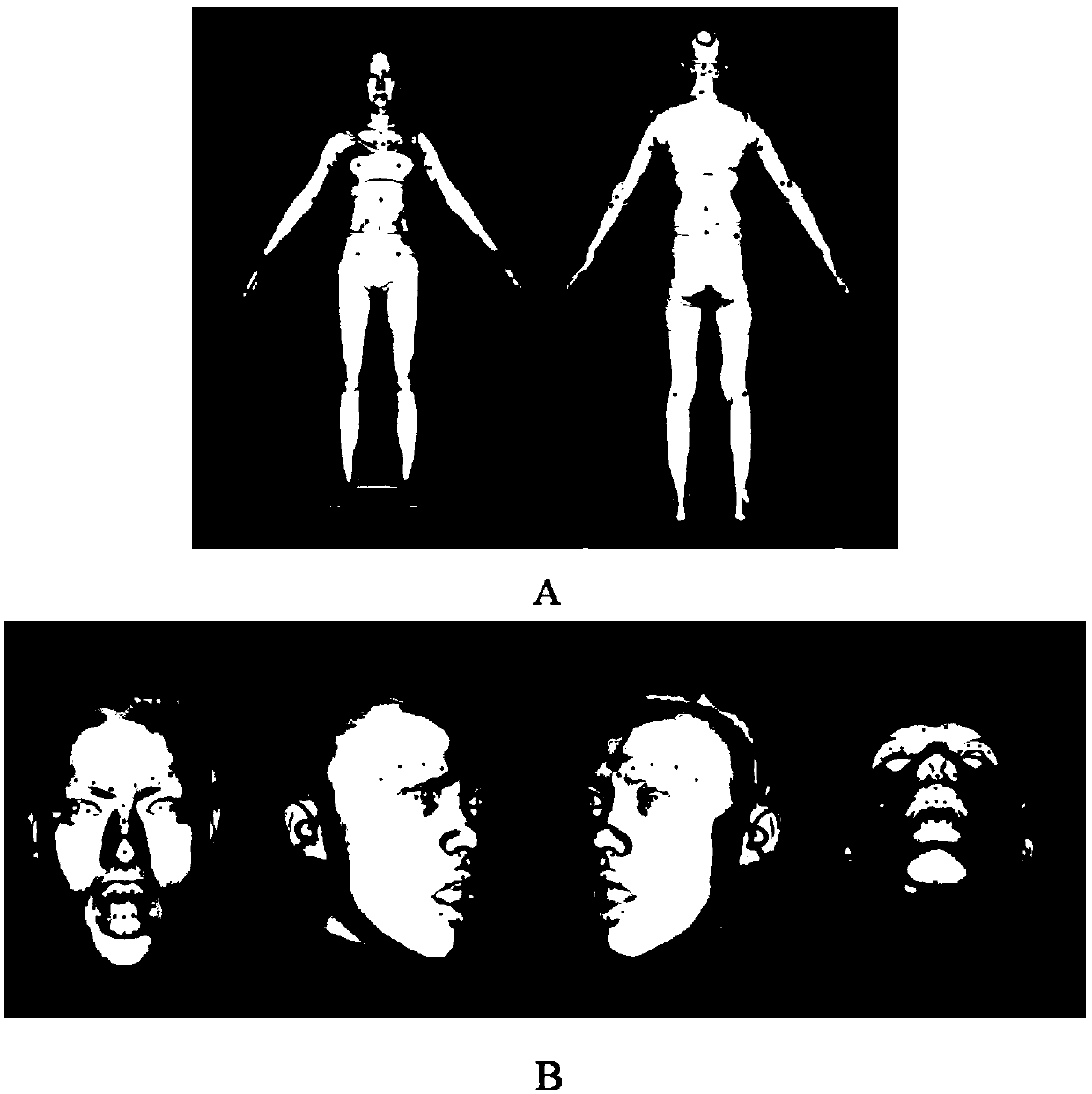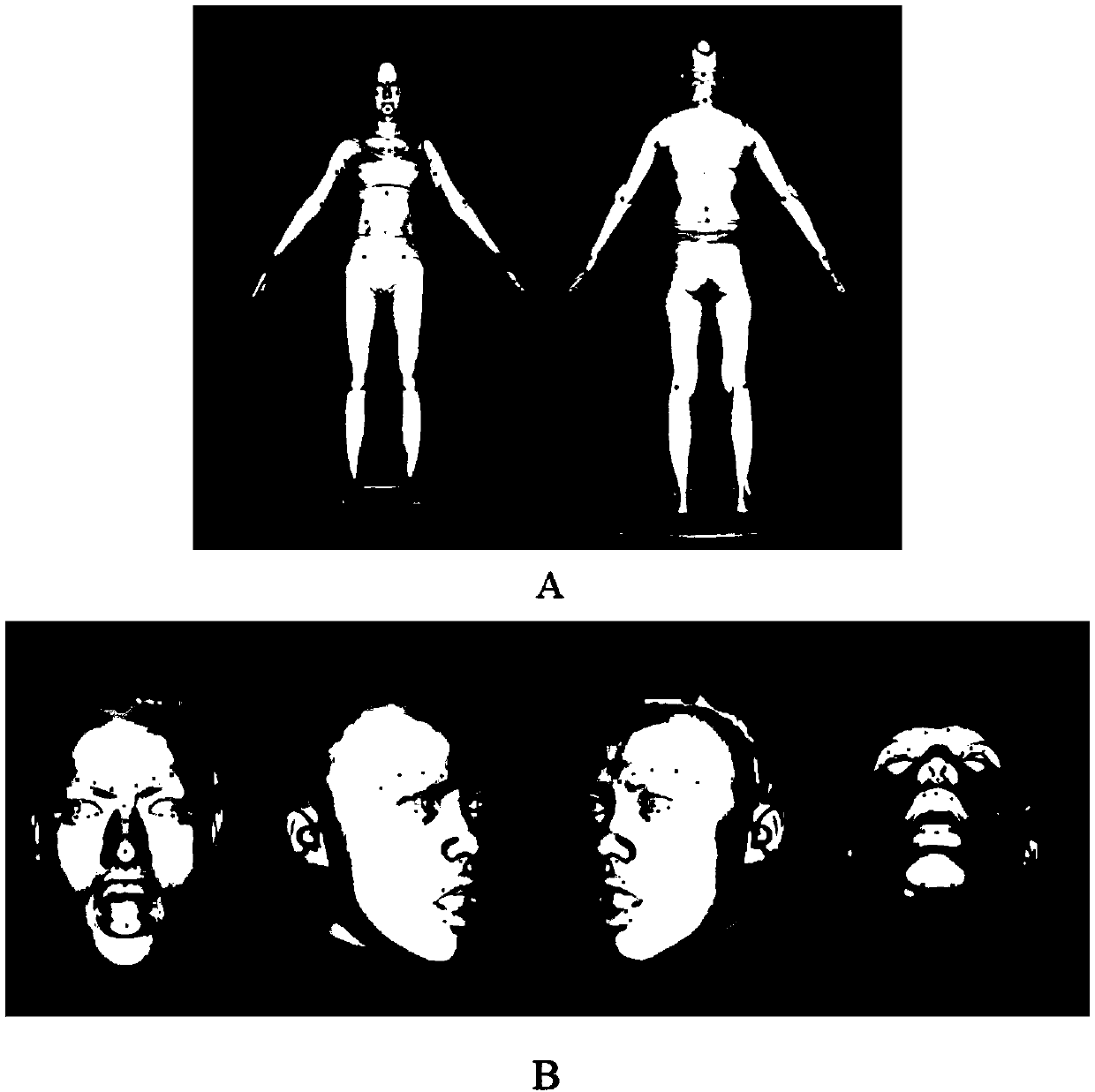Human body and human face mesh template fitting method based on deformation graph
A technology of grid template and deformation map, which is applied in the direction of graphic image conversion, image data processing, character and pattern recognition, etc., can solve the problems of cumbersomeness, unsatisfactory skin surface shape restoration, and long analysis time, etc., to achieve good fit effect
- Summary
- Abstract
- Description
- Claims
- Application Information
AI Technical Summary
Problems solved by technology
Method used
Image
Examples
Embodiment Construction
[0063] The present invention will be further described below in conjunction with specific examples.
[0064] Such as figure 1 As shown, the body and face grid template fitting method based on deformation graph provided in this embodiment includes the following steps:
[0065] 1) Use Markov random field to detect 73 feature points of human body scan data, or use regression tree method to detect 68 feature points of face scan data; figure 2 It is the result figure of the present invention to the feature point detection of human body and human face scan data (dark dots represent feature point positions, A in the figure is the human body, and B in the figure is the face).
[0066] We take different approaches to the landmark detection of human body and face. The human body directly uses the 3D model feature point detection method based on Markov random field. The essence is to calculate the maximum joint probability of 73 feature points based on an undirected graph containing t...
PUM
 Login to View More
Login to View More Abstract
Description
Claims
Application Information
 Login to View More
Login to View More - R&D
- Intellectual Property
- Life Sciences
- Materials
- Tech Scout
- Unparalleled Data Quality
- Higher Quality Content
- 60% Fewer Hallucinations
Browse by: Latest US Patents, China's latest patents, Technical Efficacy Thesaurus, Application Domain, Technology Topic, Popular Technical Reports.
© 2025 PatSnap. All rights reserved.Legal|Privacy policy|Modern Slavery Act Transparency Statement|Sitemap|About US| Contact US: help@patsnap.com



